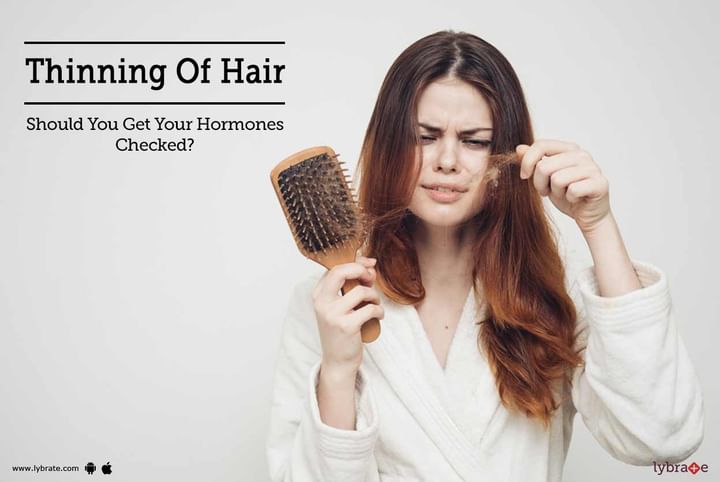Get the App
For Doctors
Login/Sign-up
Last Updated: Aug 24, 2024
BookMark
Report
Thinning Of Hair: Should You Get Your Hormones Checked?
Dr. Aastha GuptaEndocrinologist • 17 Years Exp.PG Diploma Endocrinology, MD - General Medicine, Certification In Diabetes, MBBS
Thinning hair, noticeable bald spots, large clumps of hair in the hairbrush or shower drain are indications of hair loss. This loss of hair is an effect of hormonal imbalance.
Have You Seen these Signs of Hair Loss?
- A widening part of the scalp
- A ponytail becomes noticeably thinner
- Large clumps of hair in the hairbrush or shower drain and on your pillow after a night’s sleep
Why does it happen?
- Play of Hormones: Hormonal imbalance is seen in women during menopause, perimenopause, pregnancy, and in endocrine disorders, such as polycystic ovarian syndrome (PCOS). Progesterone and estrogen are two important female hormones. Progesterone keeps a check on estrogen levels. When progesterone levels are too low, it leads to a state of hyperestrogenism which triggers excessive hair shedding and hair loss. Dihydrotestosterone (DHT) is a potent form of testosterone that normally leads to hair loss. Women, who produce high levels of male hormones (androgens), have increased testosterone levels which can convert to DHT, leading to hair loss.
- Stress: When a woman experiences any stressful condition, her adrenal glands increase the release of cortisol (stress hormone). This leads to secretion of adrenaline which leads to increased levels of testosterone and DHT.
- Under or over performing thyroid: An overactive thyroid and lack of sufficient parathyroid hormone can also result in thinning of hair. Accompanying symptoms are fatigue, unexplained weight gain, aching joints, constipation, dry skin, feeling cold all the time, and poor sleep.
- Pregnancy and childbirth: Pregnancy and childbirth change a woman’s hormonal balance and can result in hair loss. Therefore, it is normal for postpartum mothers to experience thinning of the hair and even bald patches. Such hair loss is temporary and heals itself within several months.
- Menopause: Menopause also leads to hair loss. During menopause, a woman’s estrogen levels fall and are no longer in balance with DHT levels. This low estrogen level and high DHT lead to hair loss.
- Nutrient deficiencies: Low levels of certain nutrients within the body, for example, vitamins A, E, and iron may result in hair loss.
How Can You Help Yourself?
- Consume omega 3-fatty acids: Omega-3 and omega-6 fatty acids are kinds of essential fatty acids (EFAs). They increase hair growth. Sources are walnuts, flax seeds, cold-water fish, such as salmon, sardines, herring, and mackerel.
- Get plenty of sleep: Lack of sleep causes increased stress levels, higher production of cortisol, and ultimately hair loss. Good amount of sleep will lead to harmonious functioning of the body.
- Take dietary and hair supplements to prevent hair loss: Certain supplements can help minimize the production of DHT, prevent DHT from binding to hair follicles, or stimulate inactive follicles to encourage hair growth.
In case you have a concern or query you can always consult an expert & get answers to your questions!



+1.svg)
